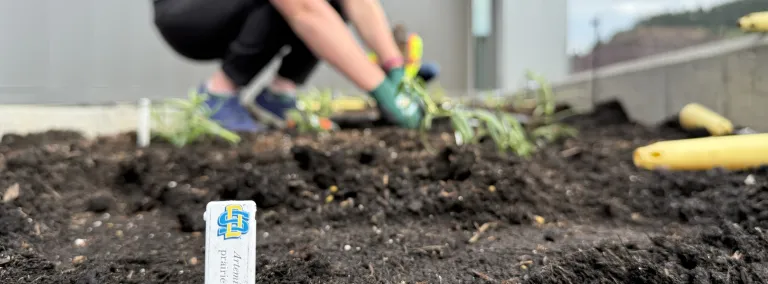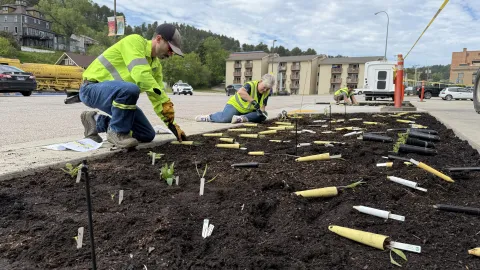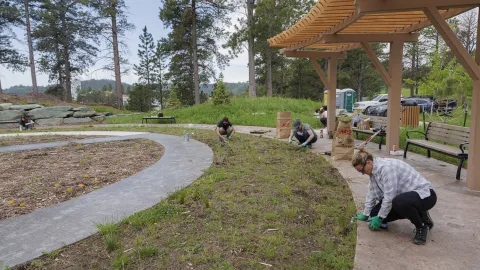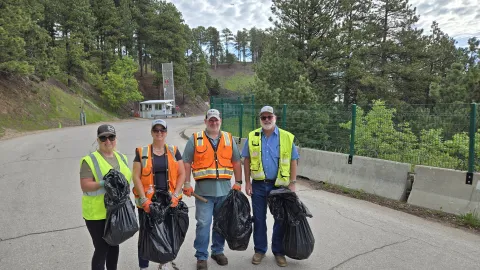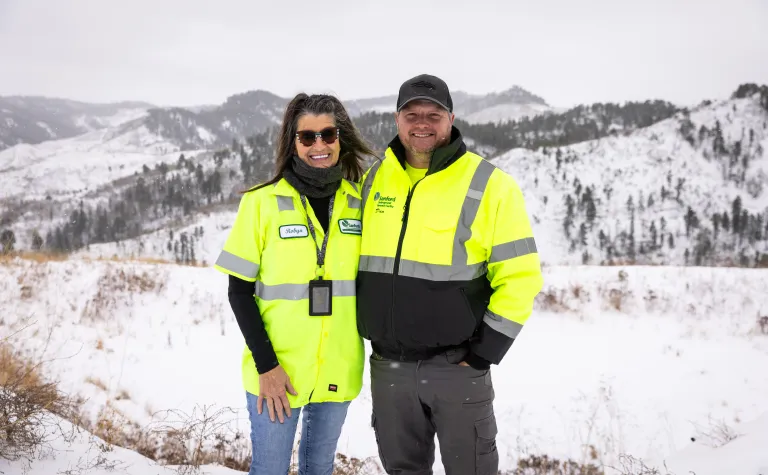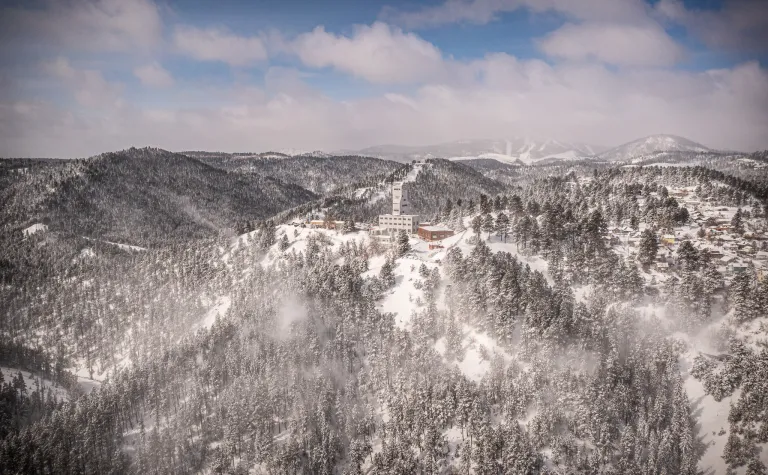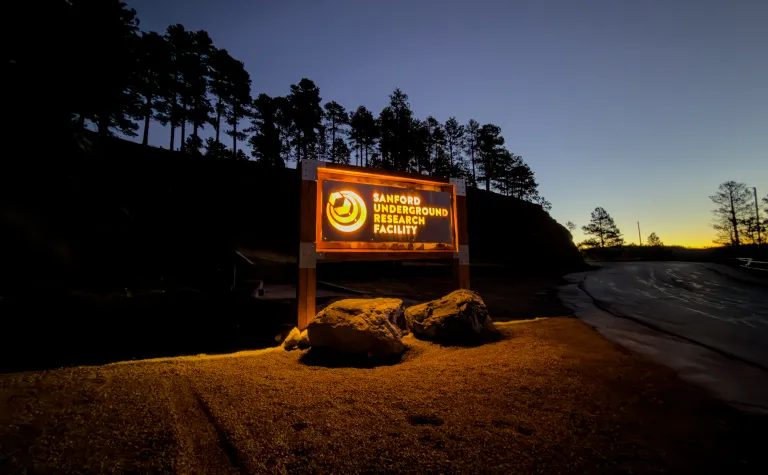SURF brings back ‘cleanup day’ tradition
The annual cleanup day, held at SURF, included trash removal and the addition of plants native to the Black Hills.
This month, volunteers at the Sanford Underground research Facility (SURF) got their hands dirty with the first annual Cleanup Day since 2019. Individuals from both SURF and the Lead community gathered to help plant native plants, pull weeds, and remove litter.
The operation began first thing in the morning with teams working at various locations throughout Lead, including the Sanford Lab Homestake Visitor Center, the E&O building, the Yates Hoist room, and Čhaŋgléška Wakȟáŋ, SURF’s ethnobotanical garden established in 2024.
The primary goal of SURF’s 2025 Cleanup Day is to help increase the number of native plants in the area and create a cleaner environment around SURF. Thanks to the Native Plant Initiative at South Dakota State University (SDSU), SURF was able to plant 216 different native plants at the Visitor Center’s flower beds. Additionally, at Čhaŋgléška Wakȟáŋ, crews planted 420 plugs of buffalo grass and pulled around 10 full bags of weeds and pine needles.
One of the volunteers, Amelia Pearson, a training specialist with SURF’s Environment, Safety, and Health Department, emphasized that Cleanup Day helps build community.
“For me, the value is being able to work with other departments that I don’t get to interact with outside of training anymore. It’s kind of nice to have a conversation outside of work and get to know each other a little bit more,” Pearson said.
Another volunteer, Emily Berry, an Education, Outreach, and Experience Specialist at the Sanford Lab Homestake Visitor Center, added that the activity also allowed volunteers to share their knowledge about Cleanup Day and SURF with visitors.
“We got to talk to some visitors about what we’re doing and the native plants we’re putting here from SDSU, which is super cool,” Berry added.
Up the hill at Čhaŋgléška Wakȟáŋ, Rochelle Zens, the community relations specialist at SURF, added that, “It’s always great to get staff up here to see the different plants in the garden and get their hands dirty, when we’re used to sitting at a desk most of the time.” In addition to Cleanup Day helping workers and the community grow and relax, Zens says it also educates people on the importance of wildlife diversity and the history of the land they live and work on.
“Prior to the pandemic, we had a cleanup day, but not to the extent with the garden beds and everything. So, we're giving it new life with the addition of the garden spaces and paying respect to the land that we're in and acknowledging not only the native populations of this area, but the plants that have been here forever, too,” Zens stated.
Community relations intern, Brooke Lammle, works with Zens in teaching others about the garden. For Lammle, the garden offers a place to learn and foster community. “Čhaŋgléška Wakȟáŋ has helped me learn the past and present of the Black Hills.
Planting Buffalo Grass as a community and caring for the indigenous plants has shown me that everything, in time, can grow and prosper in more ways than one,” Lammle said.
Zens adds that SURF is making Cleanup Day an annual event to continue building community, helping native plants flourish, and fostering a cleaner environment around the facility in the years to come.
